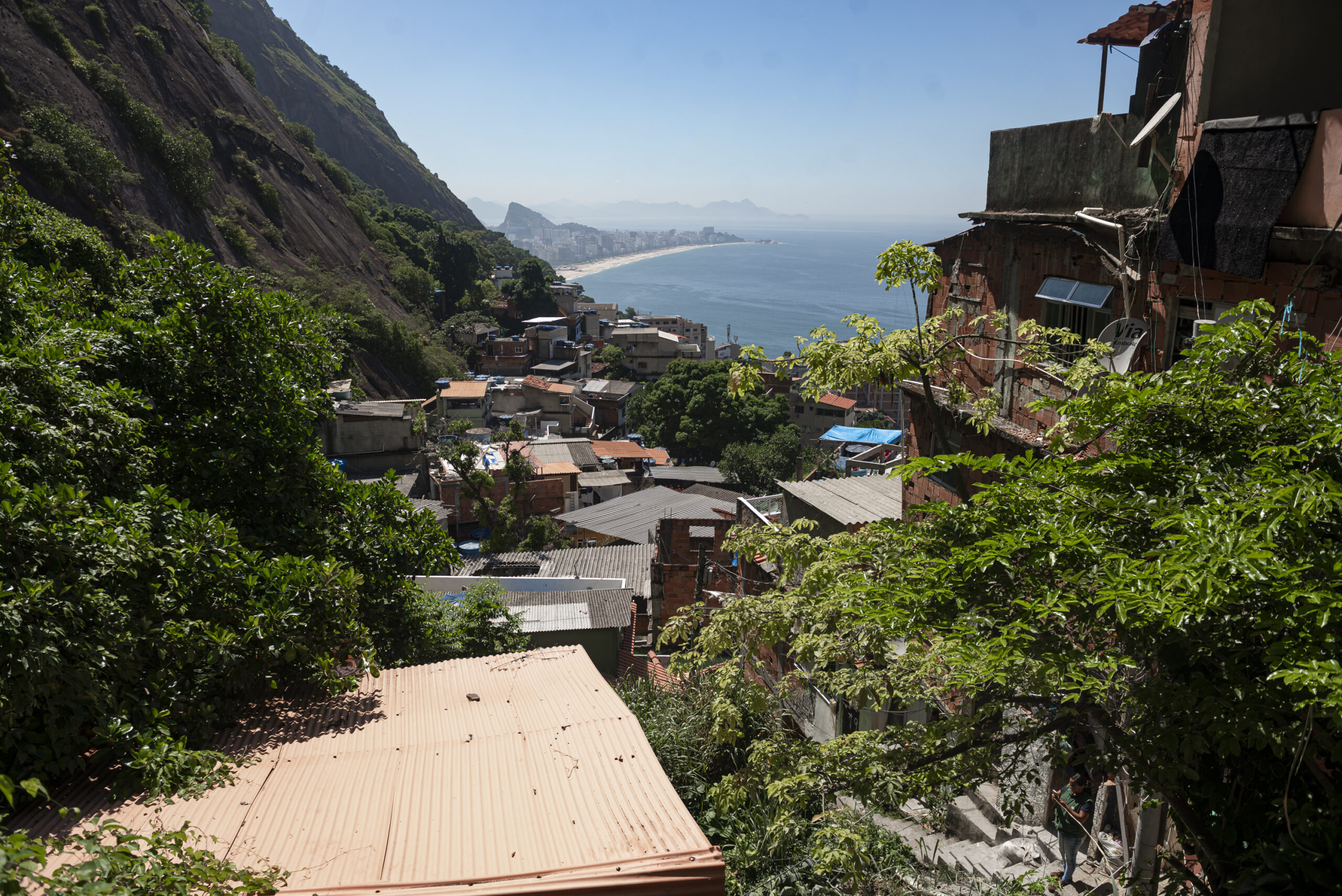
On February 6, 2019, a storm fell over Rio de Janeiro in the late afternoon and lasted until dawn. According to the final report following the Parliamentary Commission of Inquiry (CPI) on Floods, carried out by the City Council, this extreme weather event hit the city with 162mm of rainfall, which represented 31% more than the average forecasted for that entire month, with winds over 100km/h, and causing the deaths of three people citywide.
Residents of the Jaqueira area in Vidigal—a favela known abroad for being a ‘trendy’ target of gentrifiers in the pre-Olympic years and located near the elite neighborhood of Leblon, in the city’s South Zone—were woken up by landslides and rock falls, floodwaters invading their homes, the noise of destruction and cries for help from neighbors. Despair and solidarity coexisted on the morning of February 7, 2019 and over the following days. Families had lost everything or almost everything—the fruits of their entire lives’ work. One resident died after being carried off by the current formed by rainwater coming down the hill. There was no electricity or water in most of the favela. Avenida Niemeyer, the only access to Vidigal, had to be closed off: a landslide hit a passing bus and two passengers were killed. Chaos reigned in the days following the storm.
Residents gathered to rescue neighbors, try to recover belongings, and clear the community’s alleyways. A line of people went down the hill with bags full of mud and trash on their backs, a trip they had to make several times. A tangle of phone charger cables formed in front of stores with generators. Everyone wanted to let their relatives and friends know what was happening.
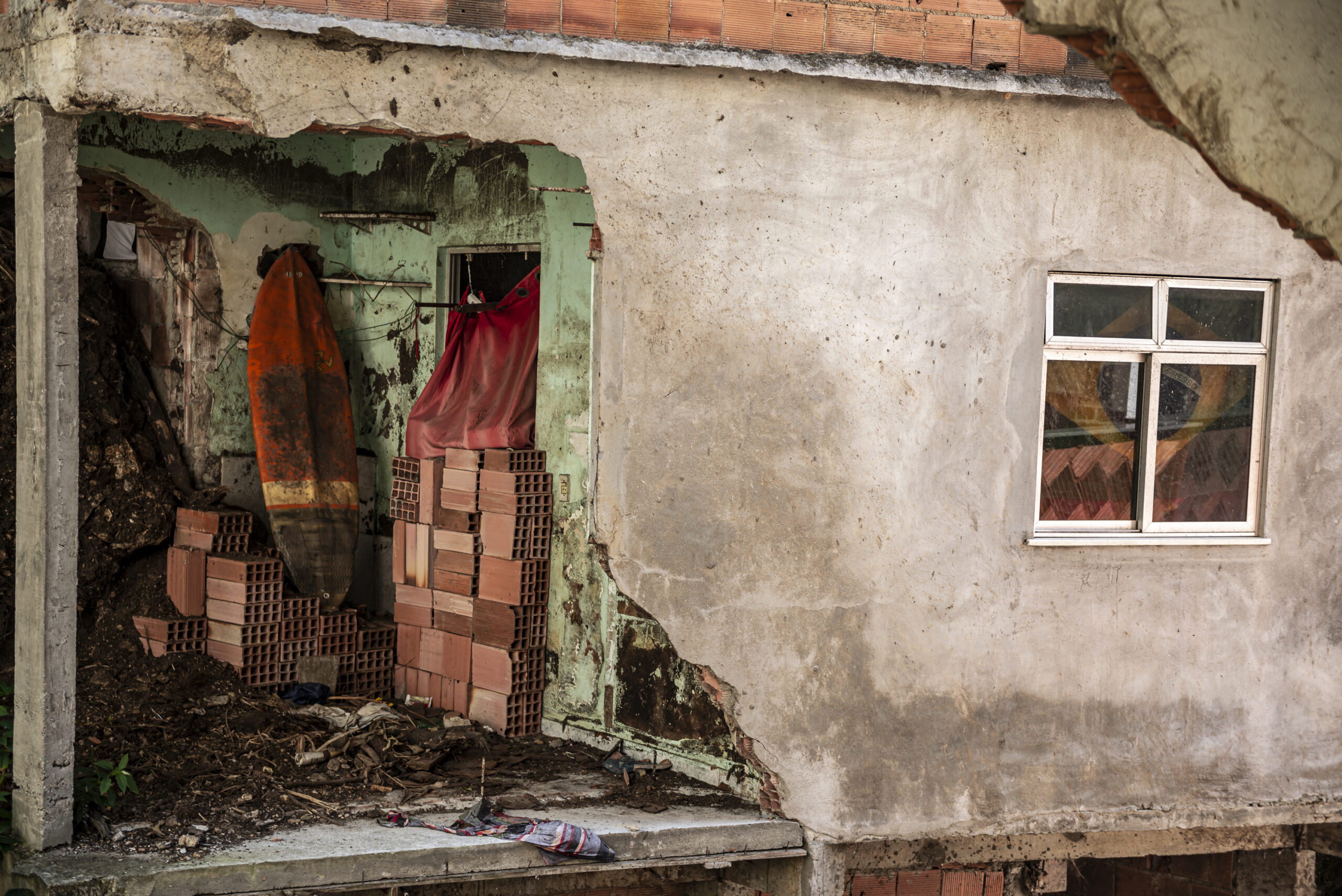
Public figures from Vidigal like Roberta Rodrigues and Jonathan Azevedo lent their voices to call for help. A women’s group, Favela no Feminino, supported residents, cooked and served meals, listed necessities, and organized and distributed donations at the Vidigal Residents’ Association (AMVV). The Vidigal na Social NGO also organized donations of clothes and food to the affected families. At that moment, resident unity was crucial.
Four years after the storm, this spirit of collectivity is being renewed as City Hall intends to remove 64 families from Jaqueira. A report from Rio’s geological department, Geo-Rio, claims that the provisional or definitive eviction of residents is necessary in order to carry out construction in the area. Due to unfounded claims of risk by Geo-Rio in the past, some residents state that the eviction is arbitrary, that containment works could be conducted to keep residents in their current location, and that the City has offered inadequate compensation for evictions.
“I was born in Vidigal. My father carried water in bamboo from the fountain to Rua Três. When I got married, I bought a little wooden shack here [in Jaqueira]. I was out at work in Providência when I was told my home was marked for demolition. I flew back as fast as I could. I said to the man from the City: ‘You have no idea how much I’ve spent on this place. You have no idea how long I’ve lived here: 44 years!’ They offered me R$160,000 (US$35,000). That’s not worth what I’ve spent and the time that I’ve lived here. My house is big; it has a backyard. If it were only for me, I might think about it; but what about my daughters, granddaughters, and great-granddaughter? They all live here. They all have their own little houses here.” — Dona Deise, 65, Jaqueira resident
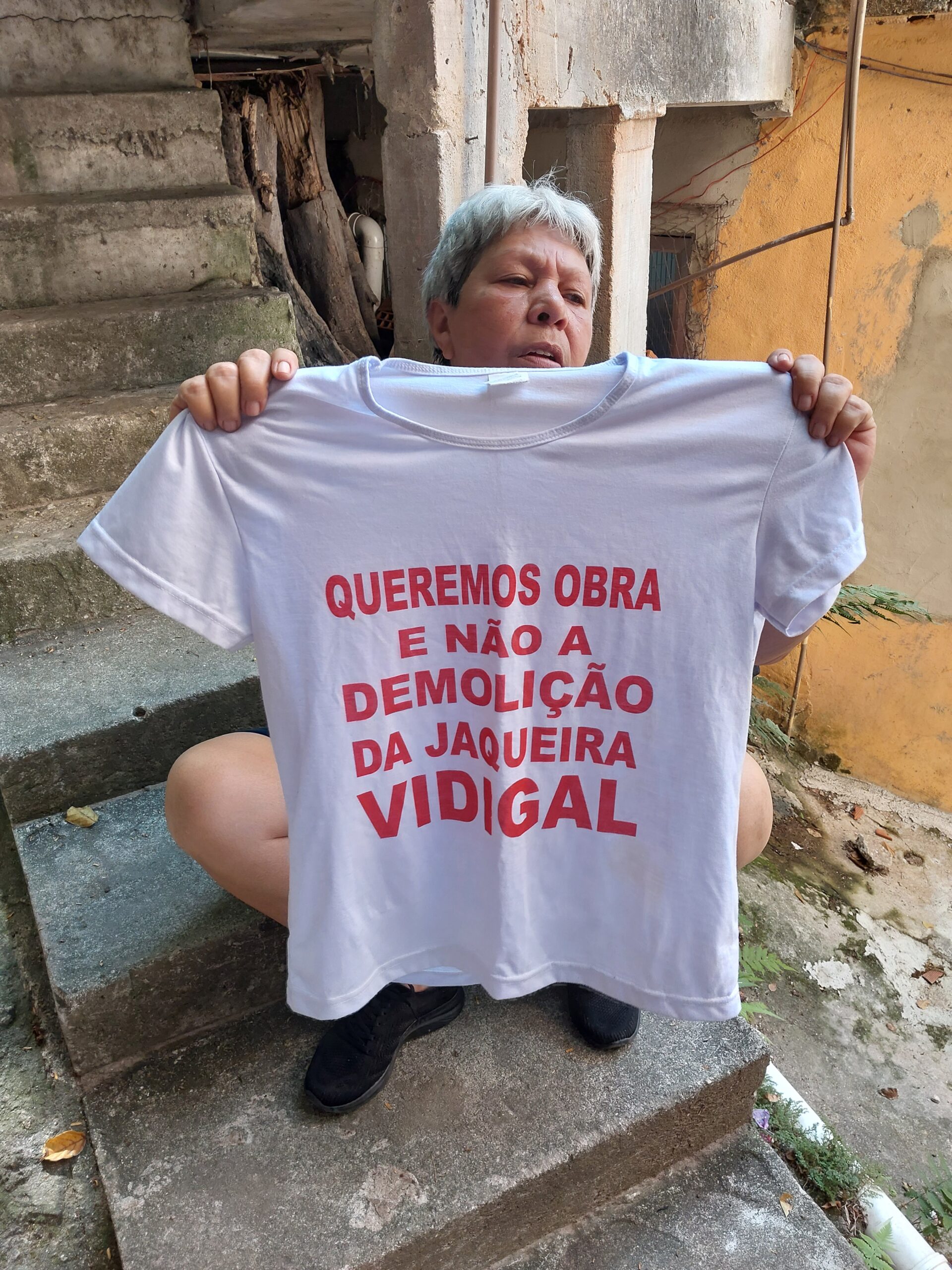
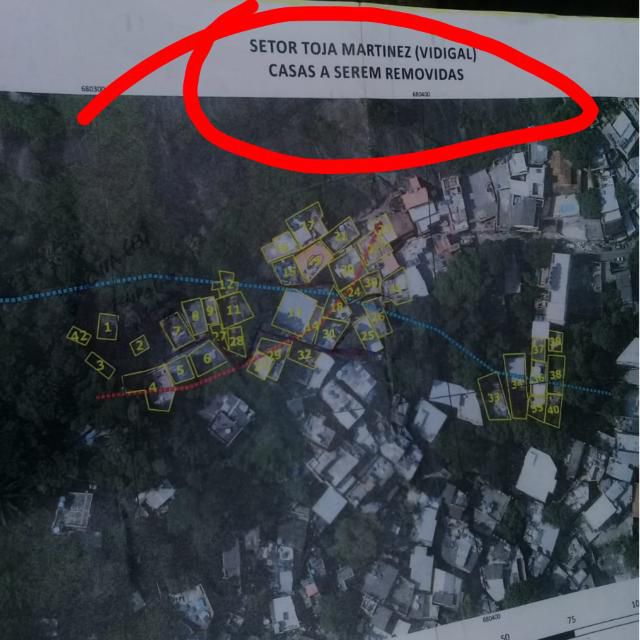
According to Márcio Farias, president of AMVV, immediately following the disaster, all properties in the area were registered, including those that did not have previous documentation with the association. Mazola, as he is known, describes how this information was forwarded to the Social Assistance Reference Center (CRAS) and Municipal Housing Secretariat (SMH). Even so, the first mapping presented by City Hall considered the removal of homes located along the entire extension of Rua Regina de Carvalho in Jaqueira, up to the area known as Pedra do Seu Vítor. The AMVV, local representatives, and the Catholic Church’s Favelas Pastoral Committee questioned this demarcation.
In November 2019, 15 houses located on the Regina de Carvalho and Major Toja Martinez streets received notification they were to be demolished. Seven of these were actually tore down. The demolition of other houses was embargoed through a case led by the Public Defenders’ Housing Nucleus (NUTH). One of the seven houses demolished belonged to Antônio Paiva.
“City workers were constantly here taking measurements and doing inspections in the affected houses, but they never shared any information. It was common for us to hand over house keys to them at these times. One day, I was out, accompanying my son’s surgery… [when City Hall officials] asked my partner for the key and they knocked my house down with a sledgehammer. When she understood what was happening, our things were already on the street, in any which way, and the house had been razed.”— Antônio Paiva, 60, Jaqueira resident

“We filed a lawsuit because, back in 2019, residents received notice of their houses’ demolition. We requested that any demolition process be halted so that we could understand the reason for demolition: whether it was due to the risk to the houses or to carry out construction works. What is the reason for these demolitions? The lawsuit filed in Court contains very little information.” — Paloma Lamego, Public Defender
According to AMVV, City Hall presented yet another eviction plan for the Jaqueira area while still under the administration of former mayor Marcelo Crivella. This time, the houses around the sewage canal would be removed and those affected would receive social rent in the amount of R$400 (US$76) per month until the City erected a building in Vidigal to resettle them safely.
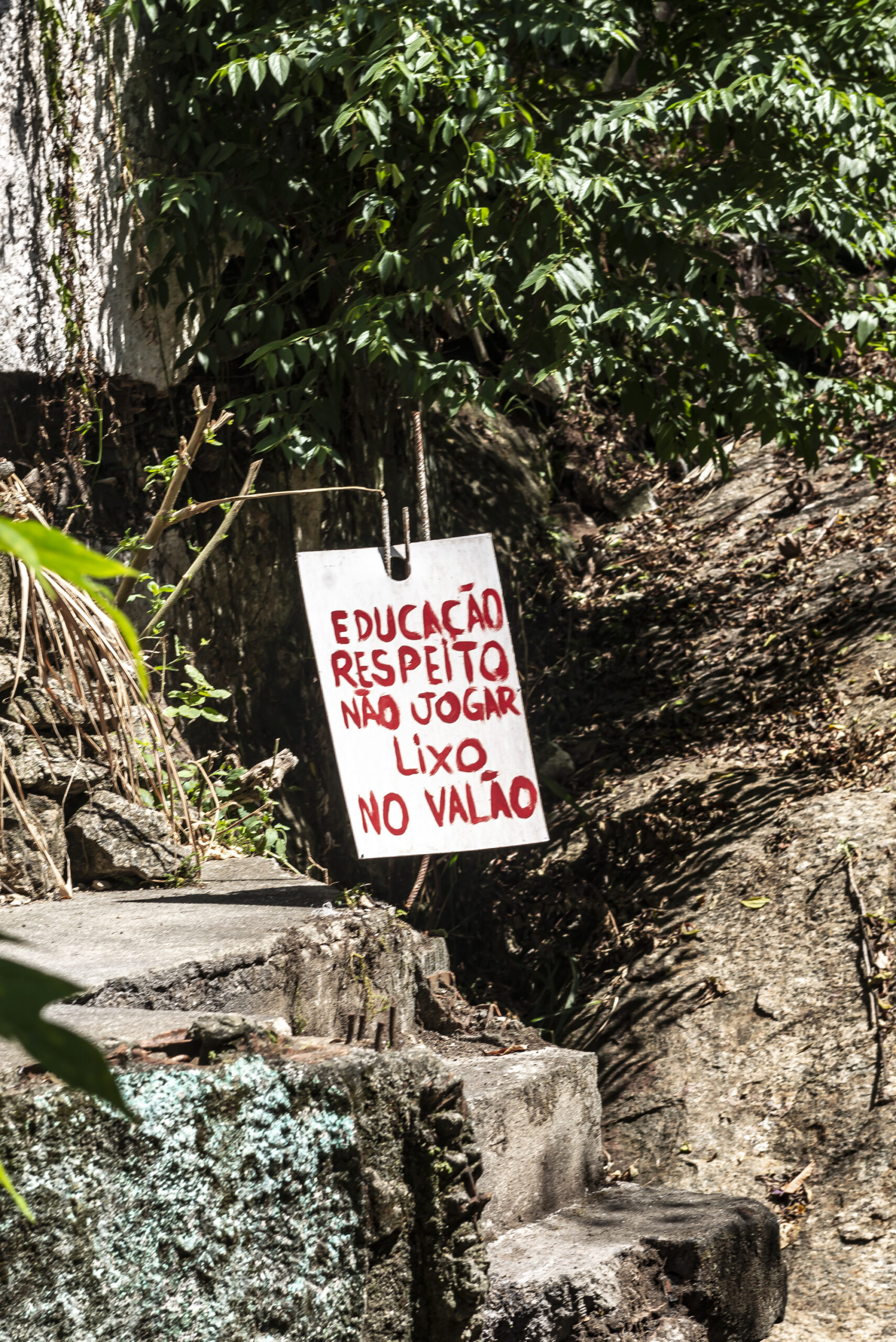
City Hall claimed that the Jaqueira region forms a thalweg, that is, the lowest point of a valley through which rain or river waters pass, and thus it is uninhabitable. The injunction suspending the demolitions were thus overturned by the Court of Justice.
“My house leans against the rock. So, it’s the first to receive the impact of the rain. It would be best if they did containment works that would bring security to the homes. If the containment work is done, I’ll stay; if not, I want to leave the house, but stay in Vidigal.” — Fernando Carvalho, 45, Jaqueira resident

The building promised by City Hall, however, has not been built. The previous administration stated that it did not find land in Vidigal at a price that the city was willing to pay: prices were too high. [It is worth remembering that in the pre-Olympic period, the City of Rio spent over R$300 million (almost US$60 million) on the removal and relocation of 700 families in a single community, Vila Autódromo.] Residents see themselves left to their own devices, out of options, anxious and worried as the situation remains unsolved.
“Are they going to kick people out of here and pay R$11,000 (US$2,100)? With R$11,000 you can’t even buy the pillar [of the house]. If they can prove that there’s a risk, I’ll leave. But I need them to pay me an honest price for my house. They came to evaluate our houses after four years. Our homes were in perfect condition. They said not to redo anything, I couldn’t do any work. Everything was abandoned. So they want to give us an estimate now?” — Jaqueira resident who asked not to be identified
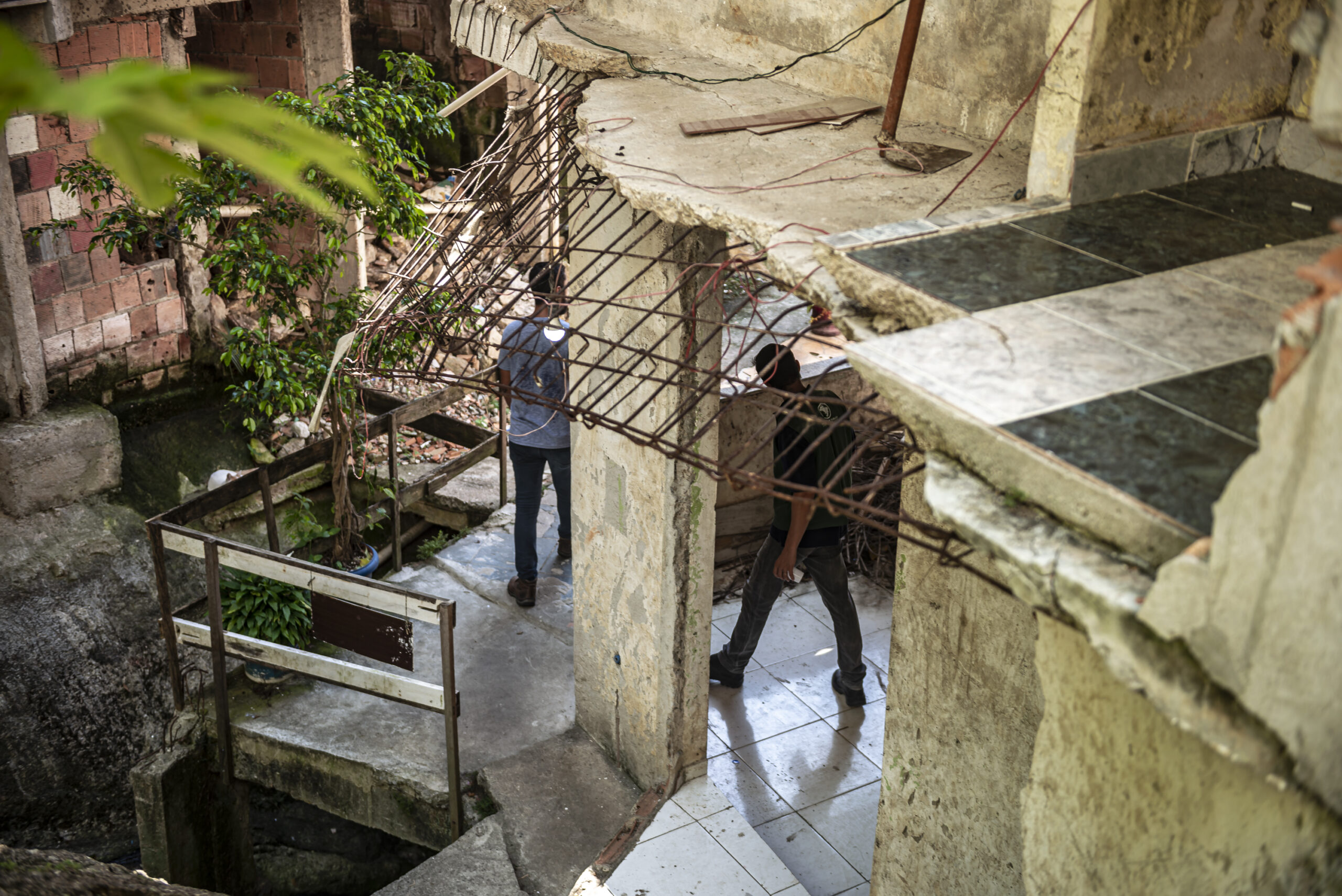
Due to the heavy rain that fell this February in Rio de Janeiro and the heaviest rainfall recorded in Brazilian history, which devastated the northern coast of São Paulo that month, the Municipal Housing Secretary Patrick Corrêa approached the Public Defenders’ Office to arrange a meeting to discuss the construction works in Jaqueira. The Public Defenders then communicated that residents did not agree with the amounts of compensation offered or with measurements City Hall had taken of their homes. Some units had been measured by drones, without an internal inspection of the properties or considering all floors built. Many houses have several families on different floors and this was not accounted for either.
“They came here and only looked at my home, but there are five homes here. My kids live above me. When I get the money, I’ll have to share it with my children. I won’t have anything left. That’s not fair. I’ve lived here for many years and I can prove it. What they want is this beautiful view of the sea. I’ve been very anxious. I’ve never been so anxious. This situation is killing me, destroying my health.” — Jane Rodrigues, Jaqueira resident for 40 years
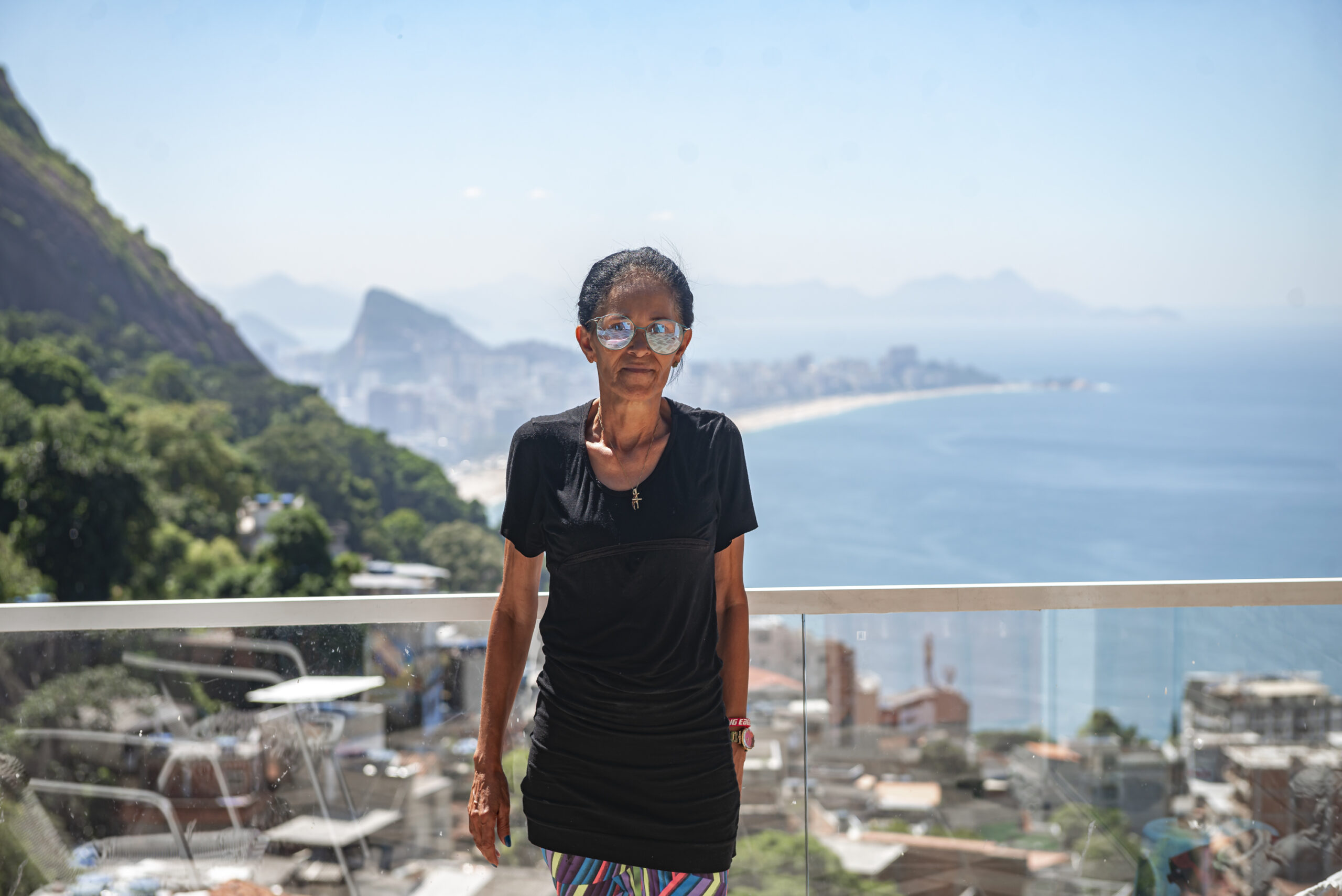
At residents’ request, on Monday March 20, the Public Defenders’ Office made a technical visit to the houses in Jaqueira that are under threat to correct the measurements taken by the City.
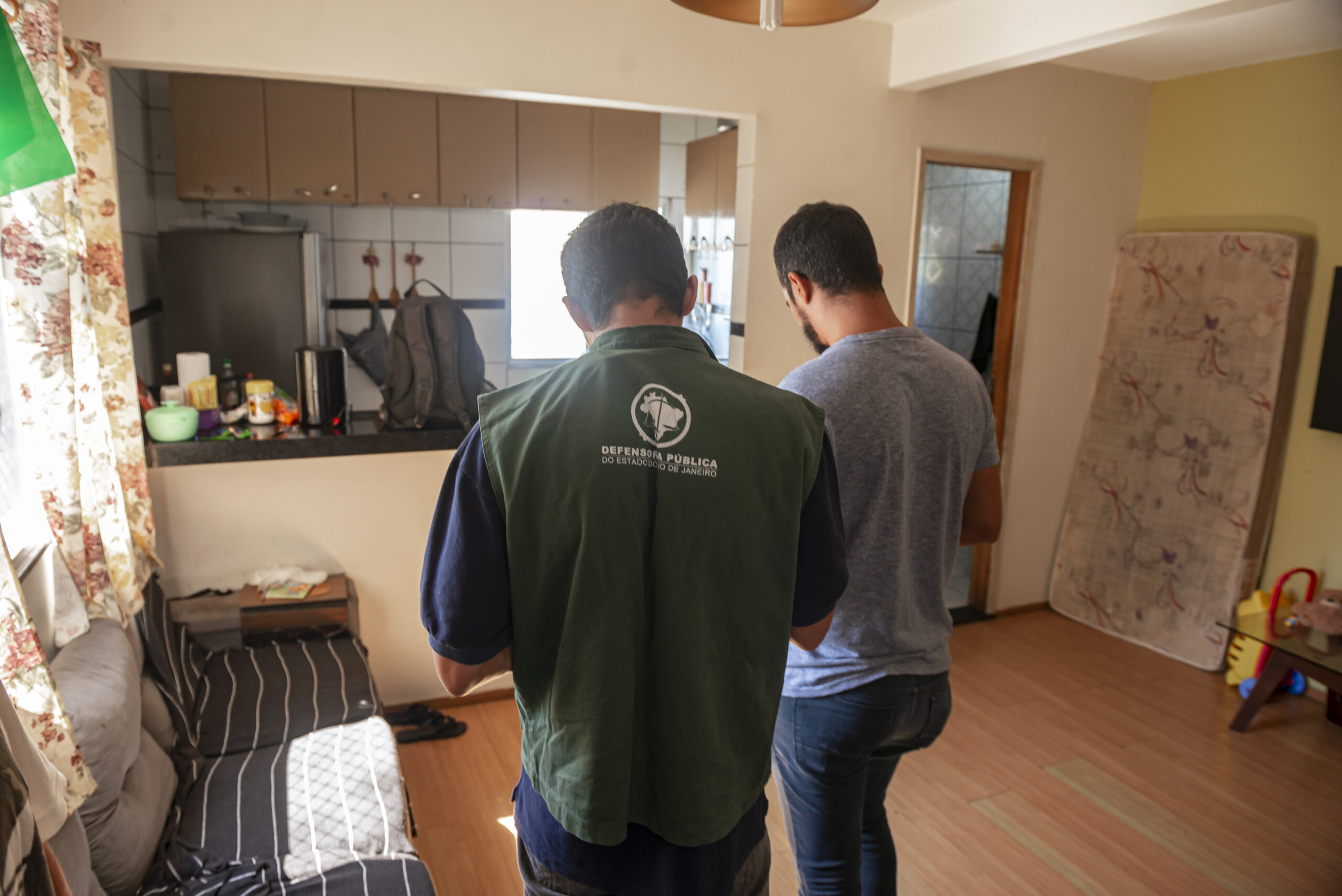
The lack of transparency in the process is concerning. Documents from Geo-Rio’s public bids for containment works in Vidigal have revealed that City Hall is planning to build a large wall in the Jaqueira area. This containment project should have begun in August 2022 but, so far, nothing has happened. The Public Defenders’ Office’s technical team analyzed Geo-Rio’s study, but does not have any information on whether the project has been modified since then. For this reason, the public defenders have requested that all alterations be documented in the lawsuit.
“We have a hearing on March 23 that the courts ordered precisely so that the City can explain what is happening. Where is this project at? What we know, from outside the official lawsuit because we searched for the information ourselves, is that there is a containment project authorized by Geo-Rio for the entire area of Jaqueira. In fact, the Municipal Housing Secretariat had made a list with compensation values to be paid. This information was obtained because we dug deeper. It isn’t in the official documents.” — Paloma Lamego, public defender
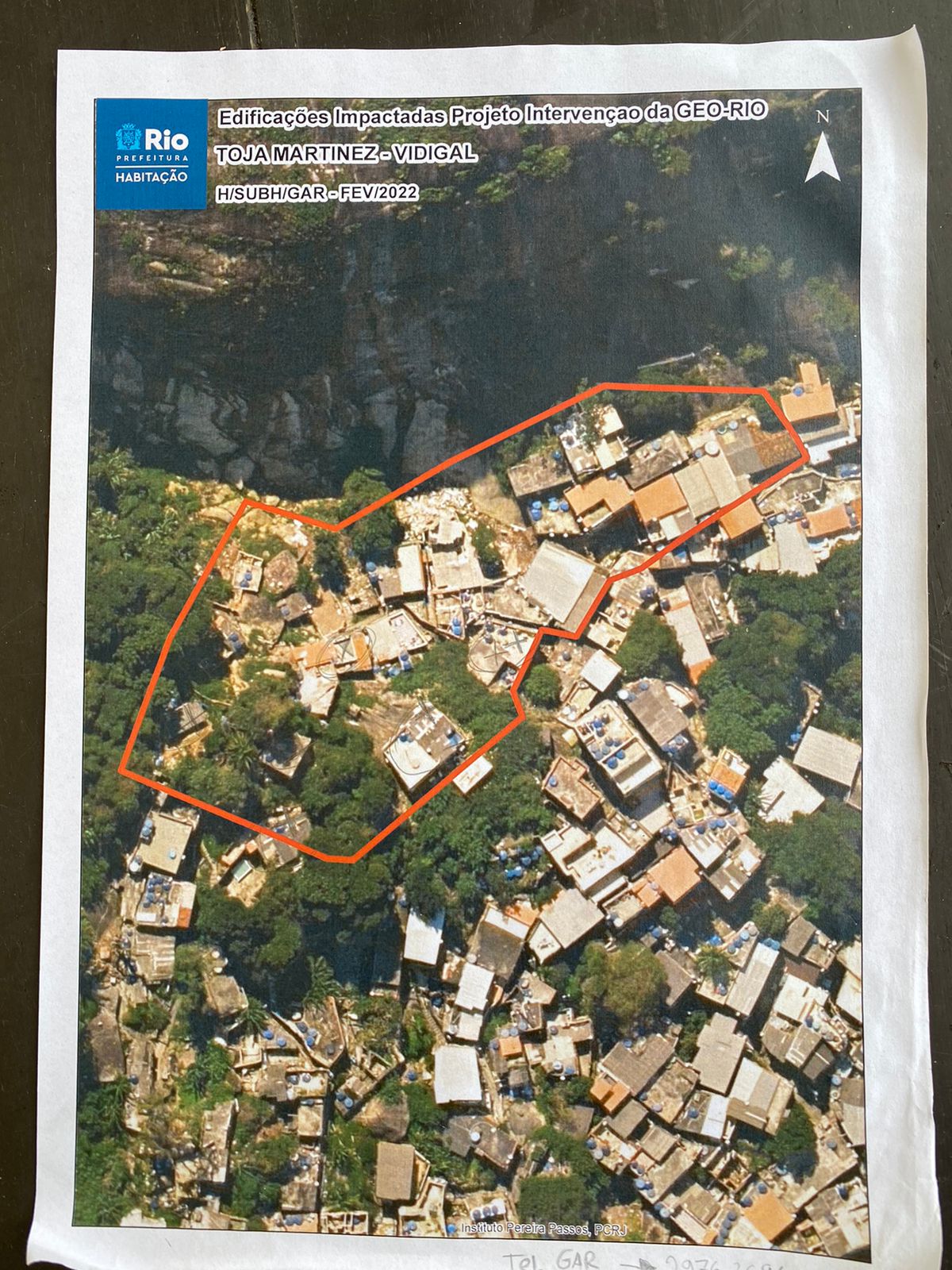
In his last meeting with the Public Defenders’ Office, Secretary Patrick Corrêa said he would go to Vidigal personally to make individual agreements with residents. However, Corrêa, who was a student at local theater troupe Nós do Morro from 2002 to 2004, sought out the theater group’s management at the beginning of the month to facilitate his contact with Jaqueira residents. The group’s leaders were taken aback, as the request falls outside their area of expertise. It is worth noting that there is an institution charged with representing residents in Vidigal, the AMVV, with whom this request would have been appropriate.
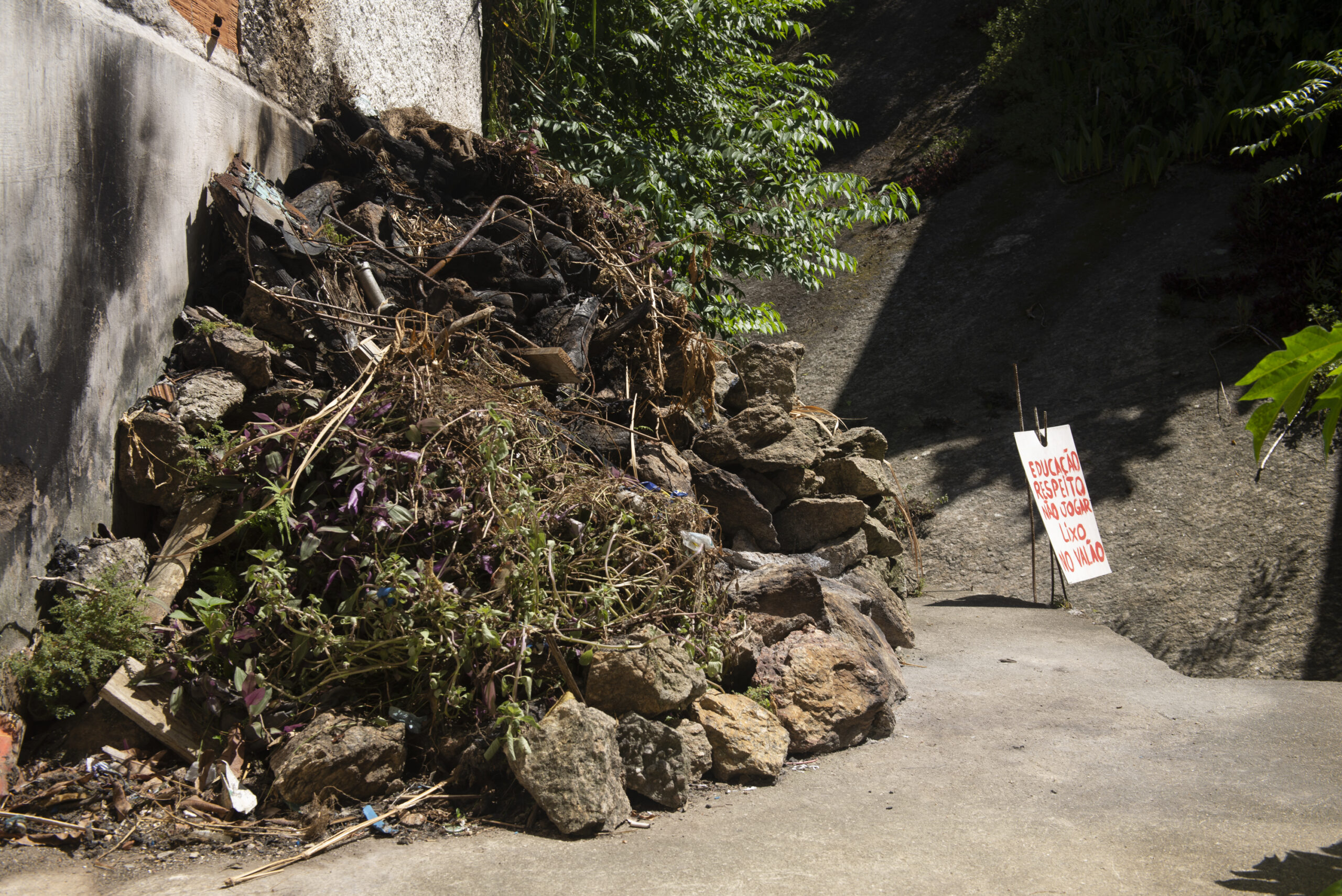
There are various doubts and uncertainties among residents of Jaqueira and local leaders, including the exact number of houses that City Hall intends to remove and what the fate of these families will be.
“If a report is presented that contradicts the need for relocation, I am ready to fight for the residents’ right to stay. But I’m not an expert on the matter. We’re talking about human lives. In Rocinha, the containment work is being carried out with residents still living there. I don’t know if the same is possible here in Vidigal. The report that was presented to me requires evictions: there are loose rocks threatening to fall at any moment, with or without rain. We are also concerned about the compensation plan. Only the houses that are still standing are included in the list of compensations. Some houses have already been demolished, but they’re nowhere in the Housing Secretariat’s records.” — Márcio Farias, AMVV president
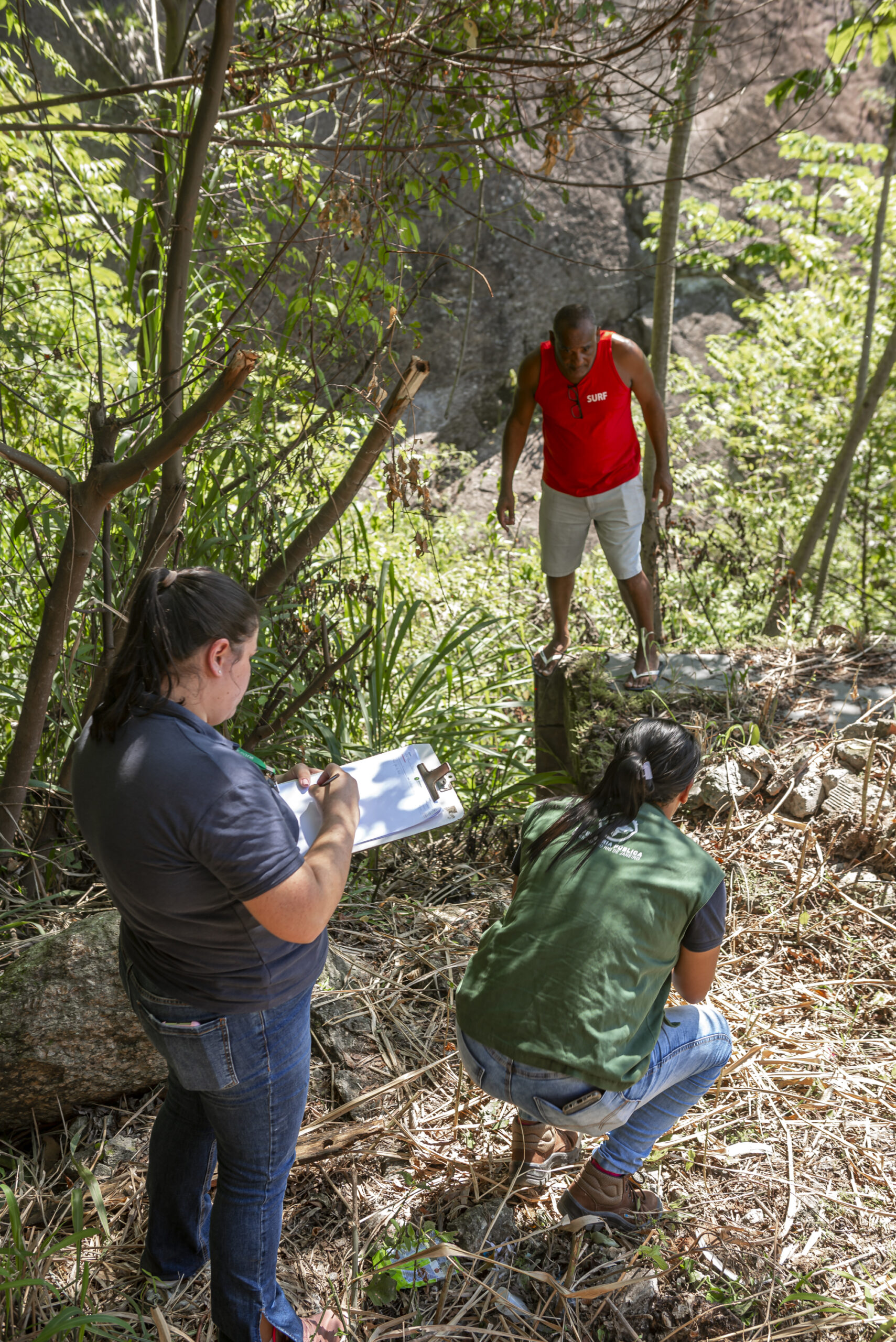
Residents of Vidigal, not only those of Jaqueira, demand that City Hall inform them of the project being developed for that area. Vidigal fought against an attempted forced eviction 45 years ago, based on a purported landslide risk in an area known as 314. However, it was discovered that the eviction was planned so that luxury homes could later be built on the site. Jaqueira has one of the most stunning views of Rio de Janeiro. Residents are fearful that the current aim is, once again, real estate speculation and gentrification and not actually about saving lives.
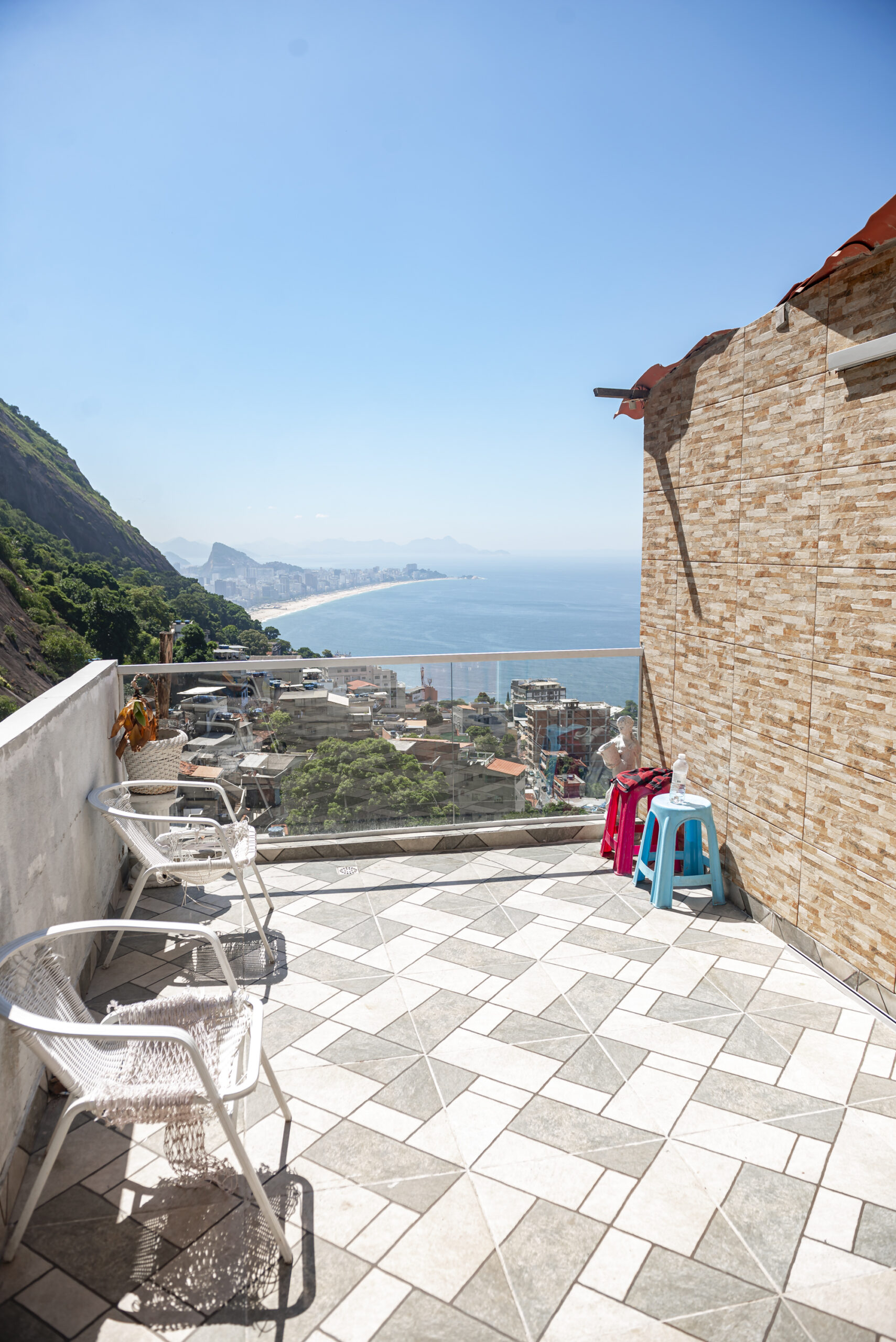
The Municipal Housing Secretariat and Secretary Patrick Correa were contacted for this report for answers regarding the issues presented by the residents of Jaqueira but we received no response at the time of writing.
More photos of government neglect and environmental racism in Jaqueira, Vidigal:
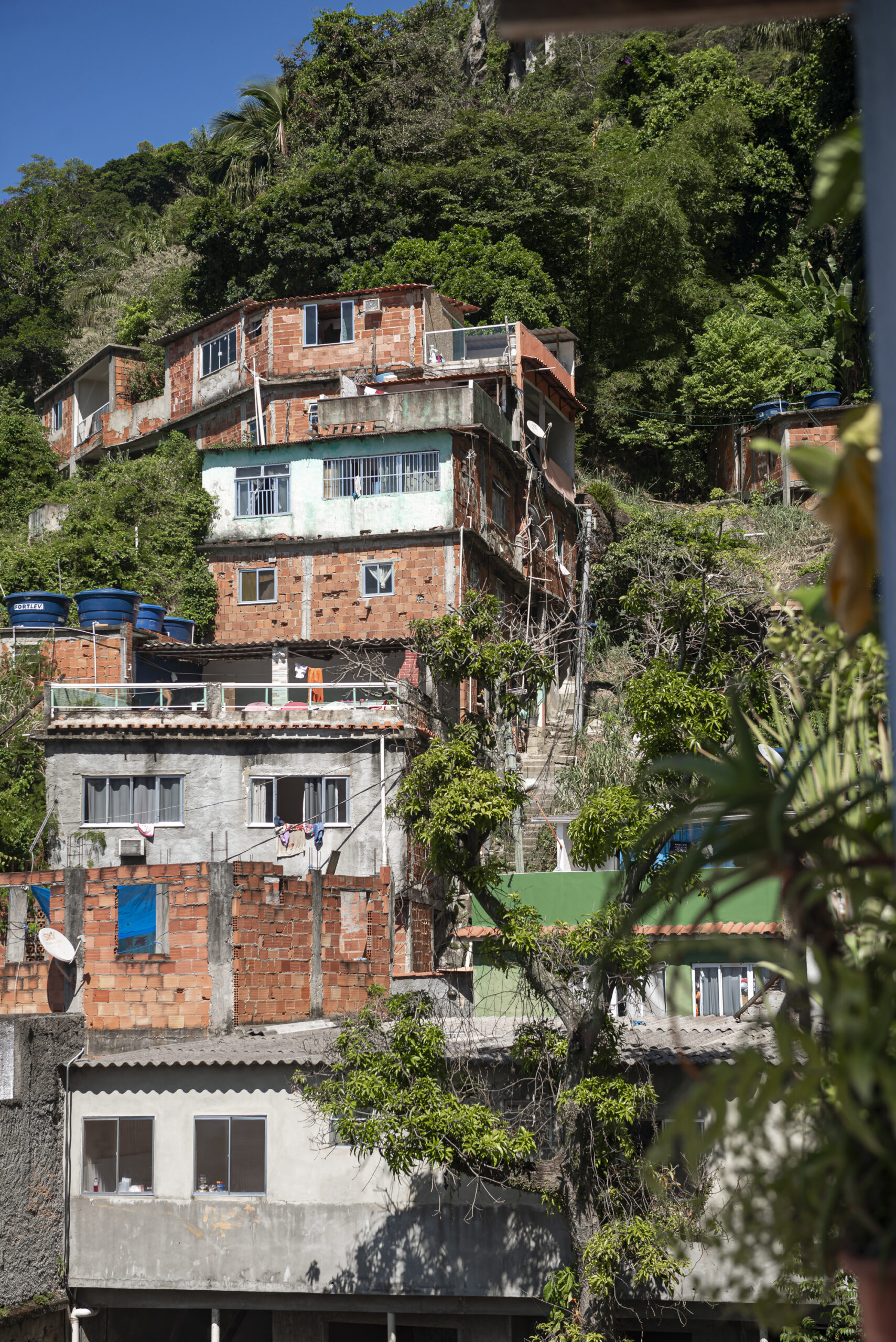
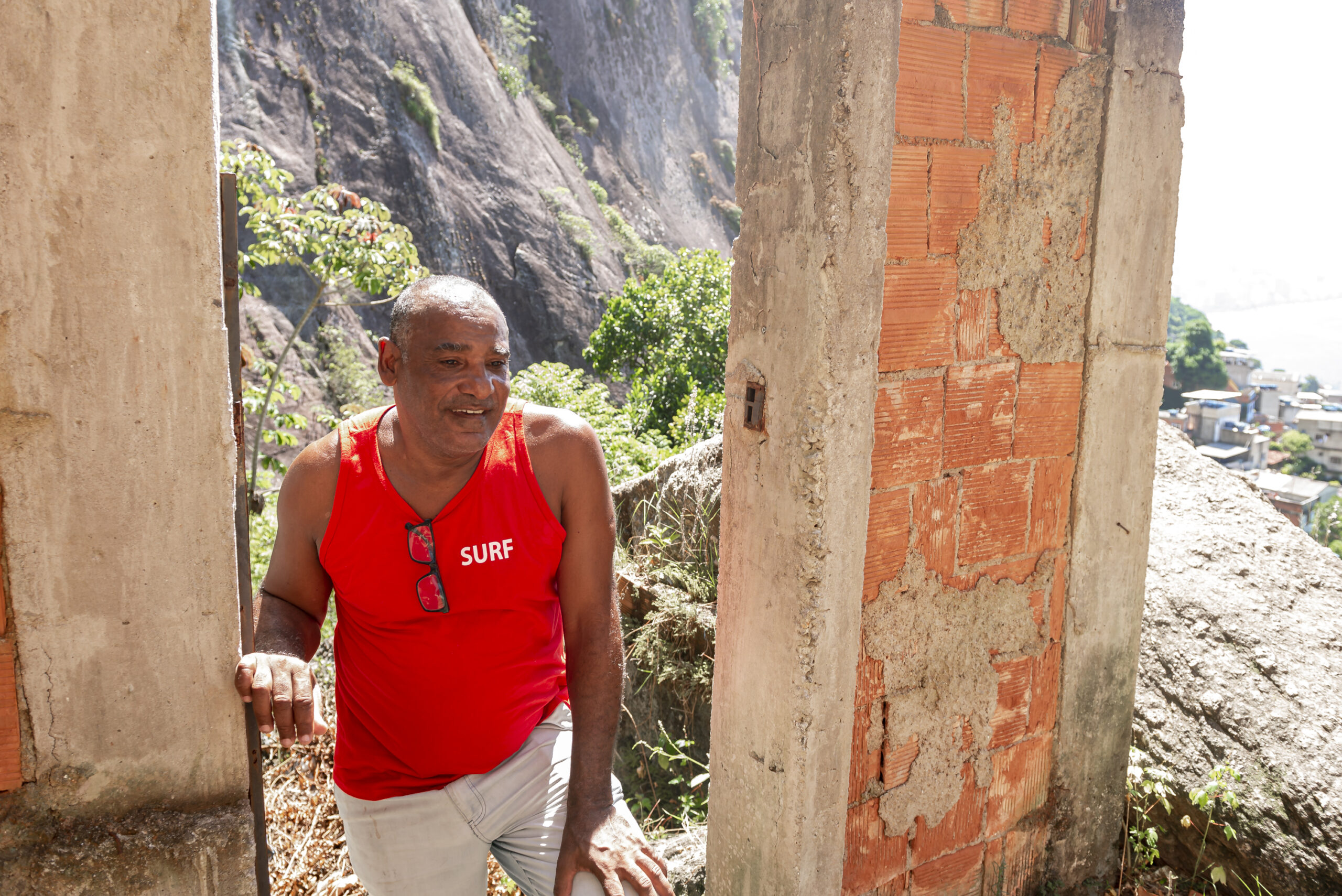
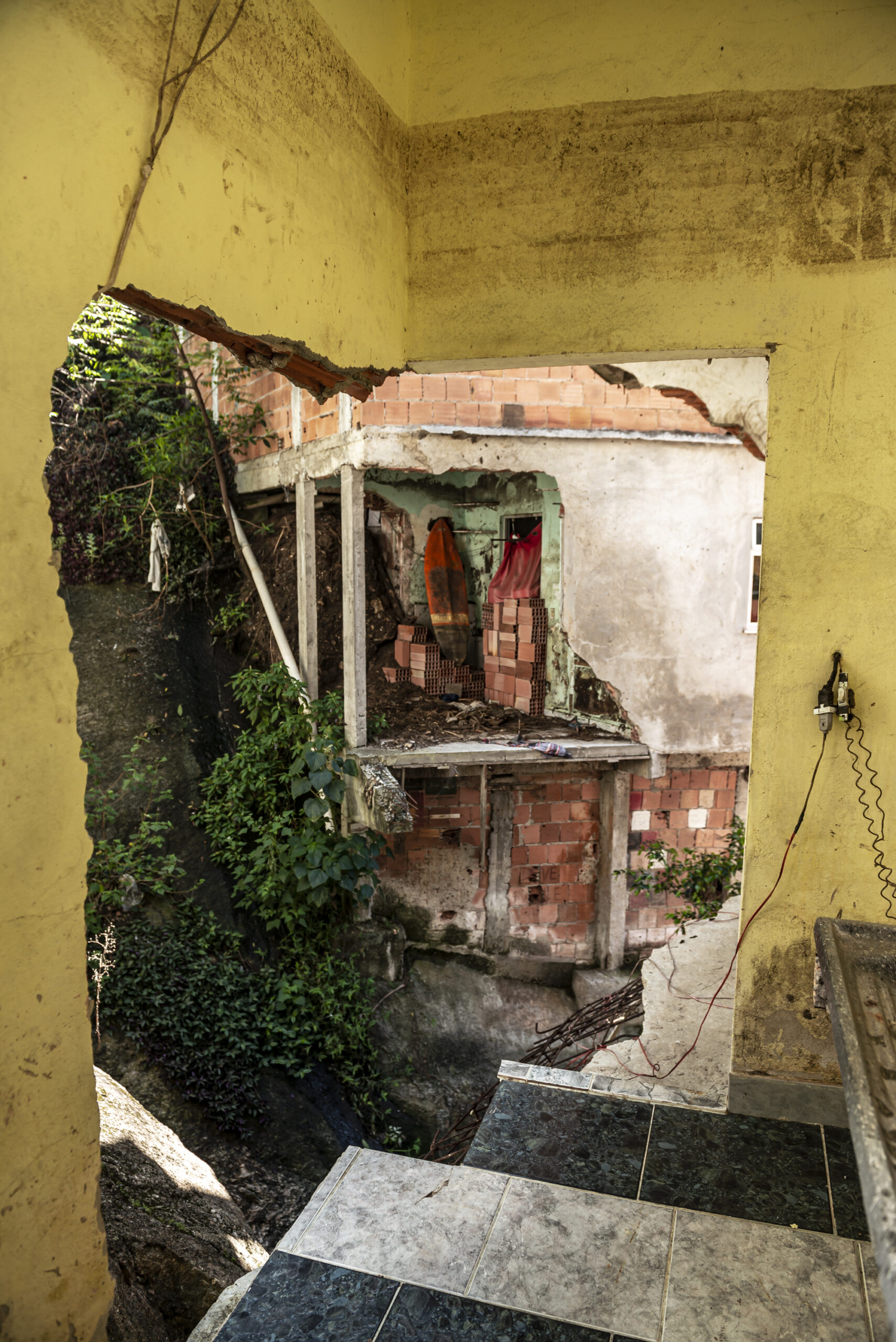
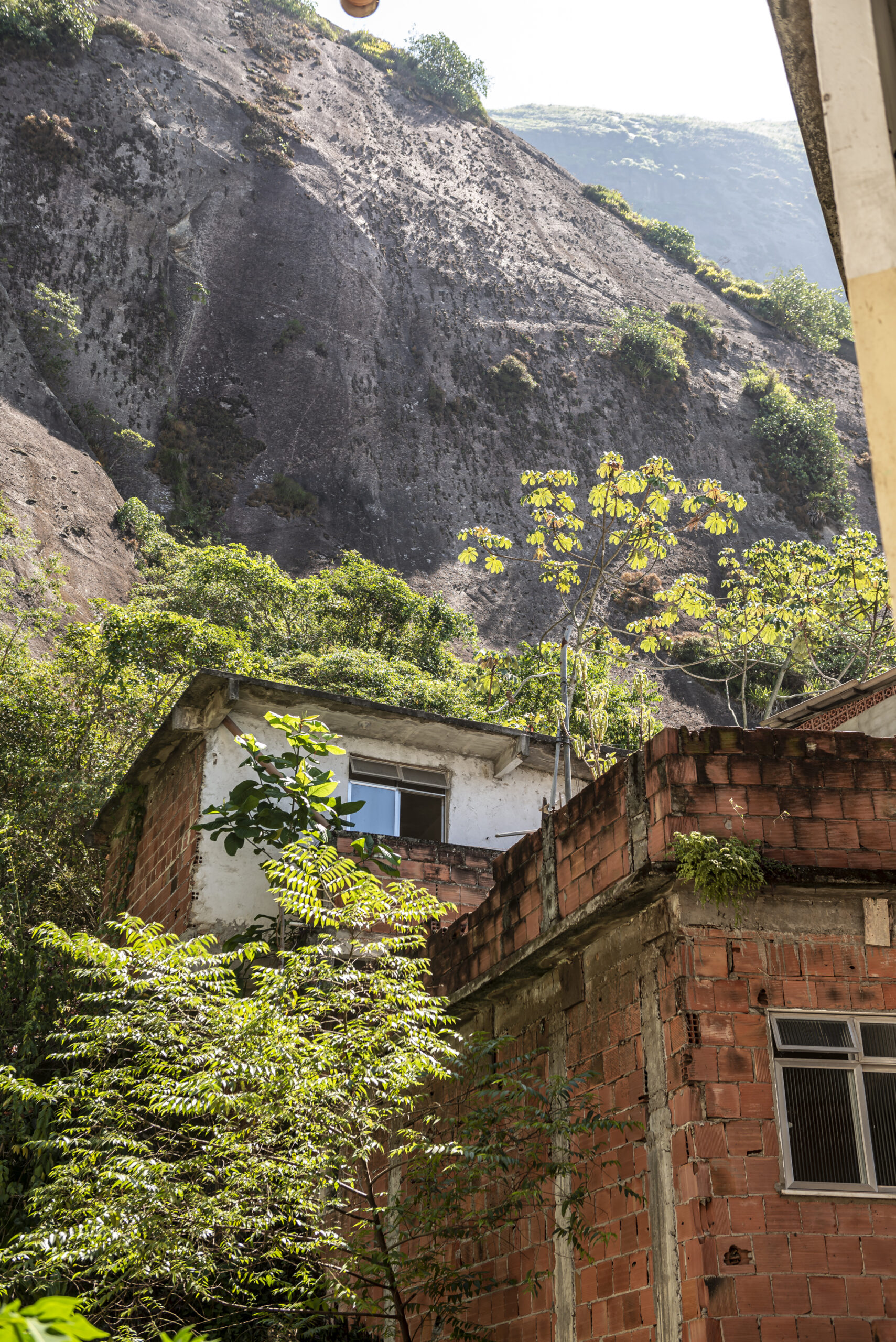
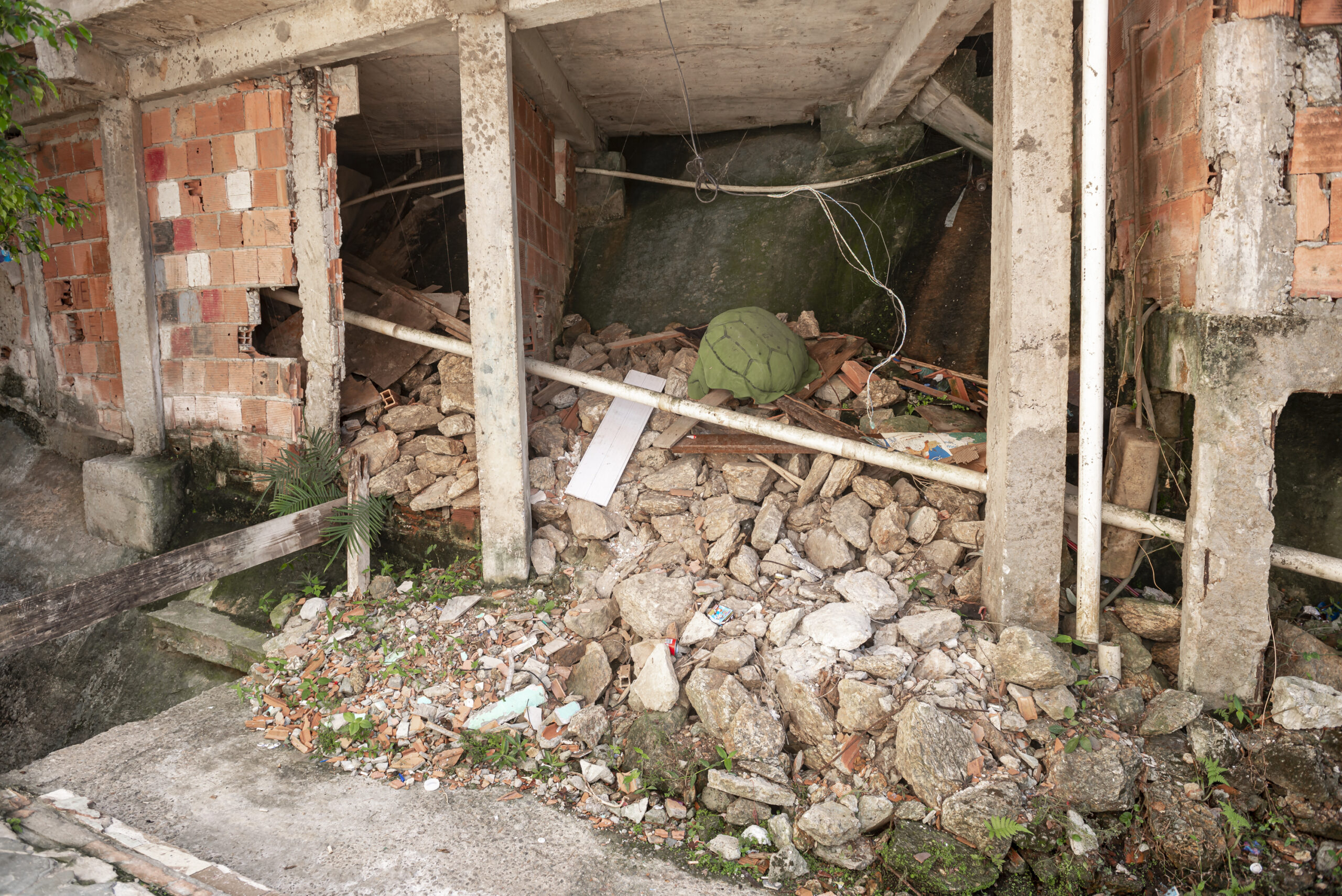
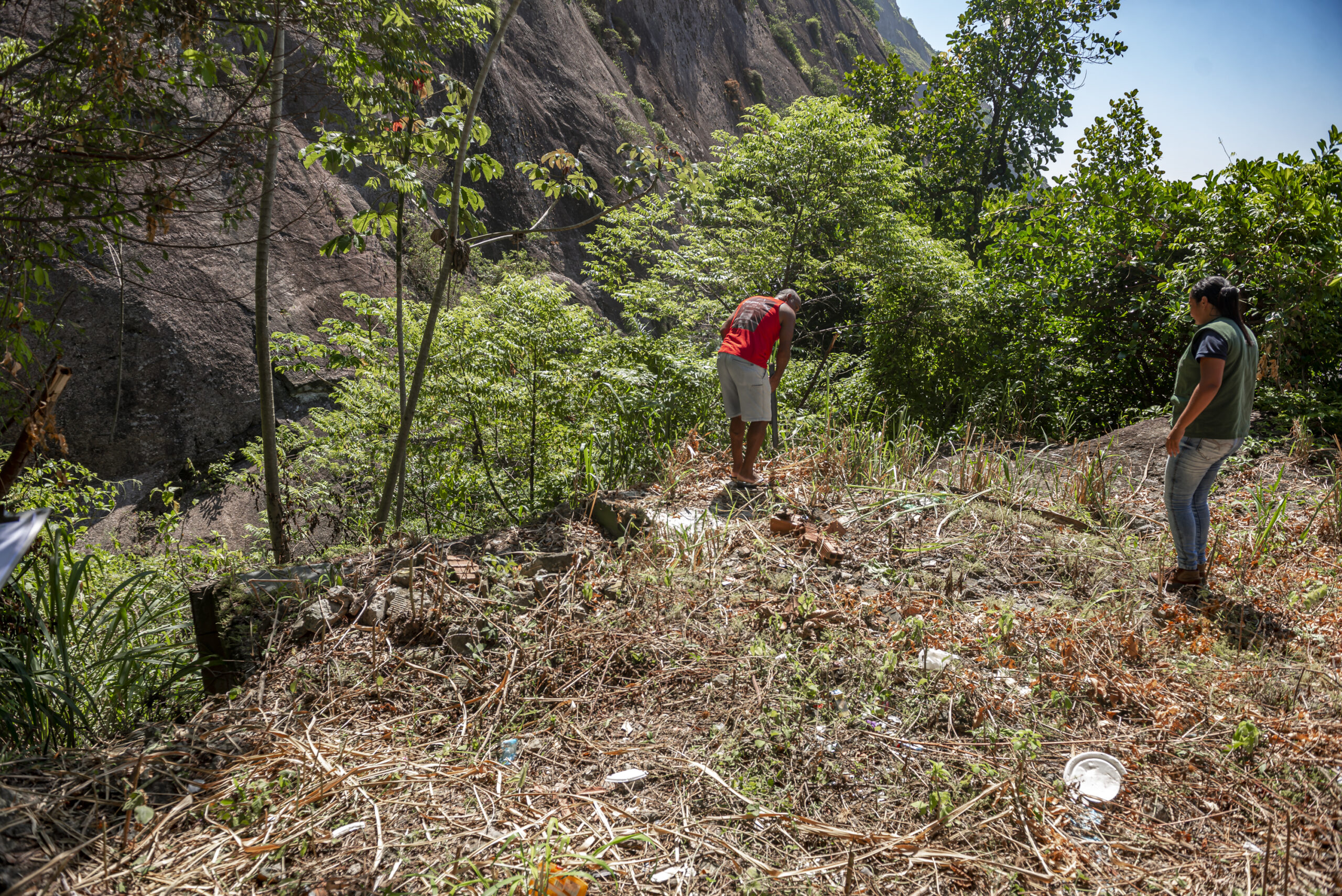
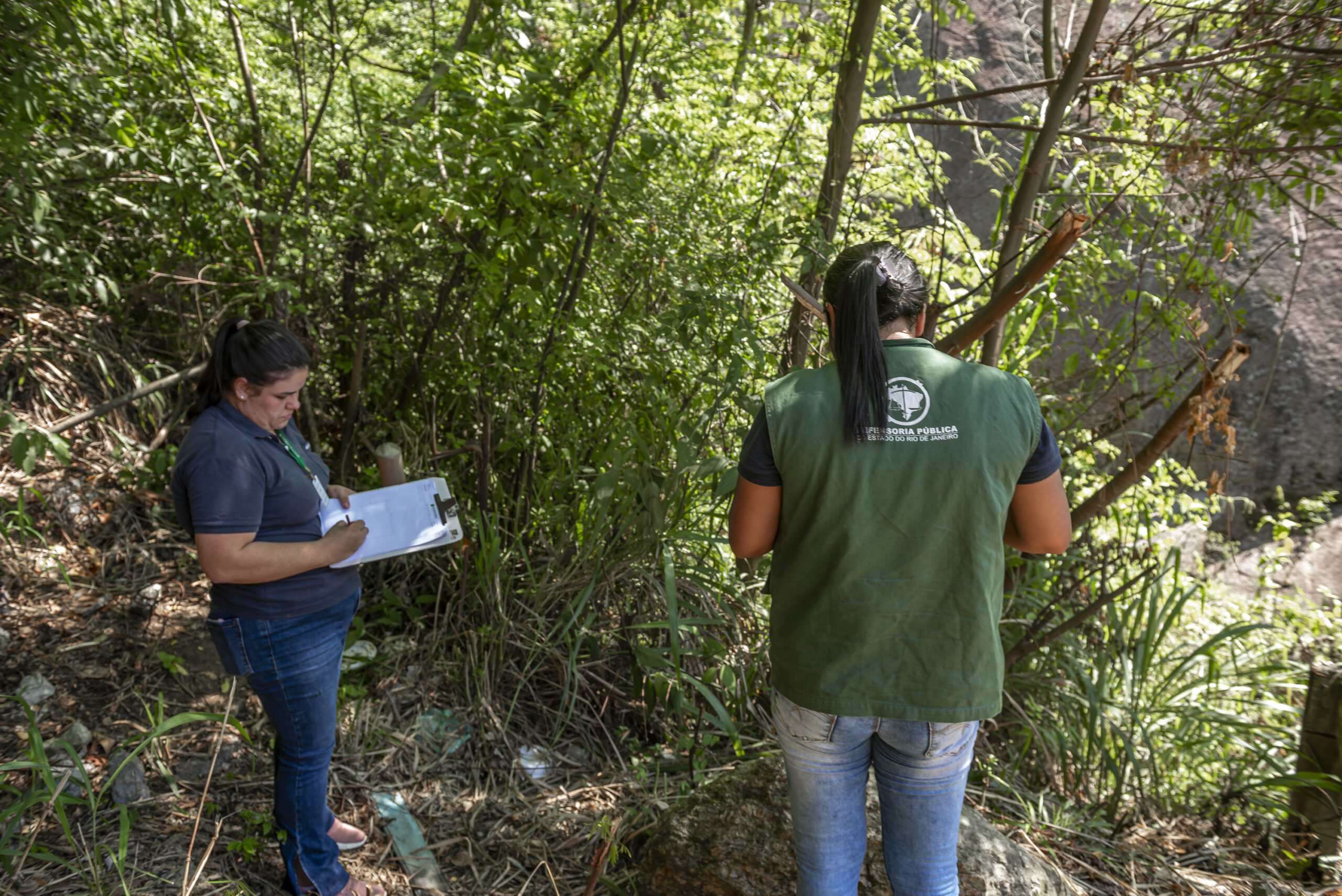
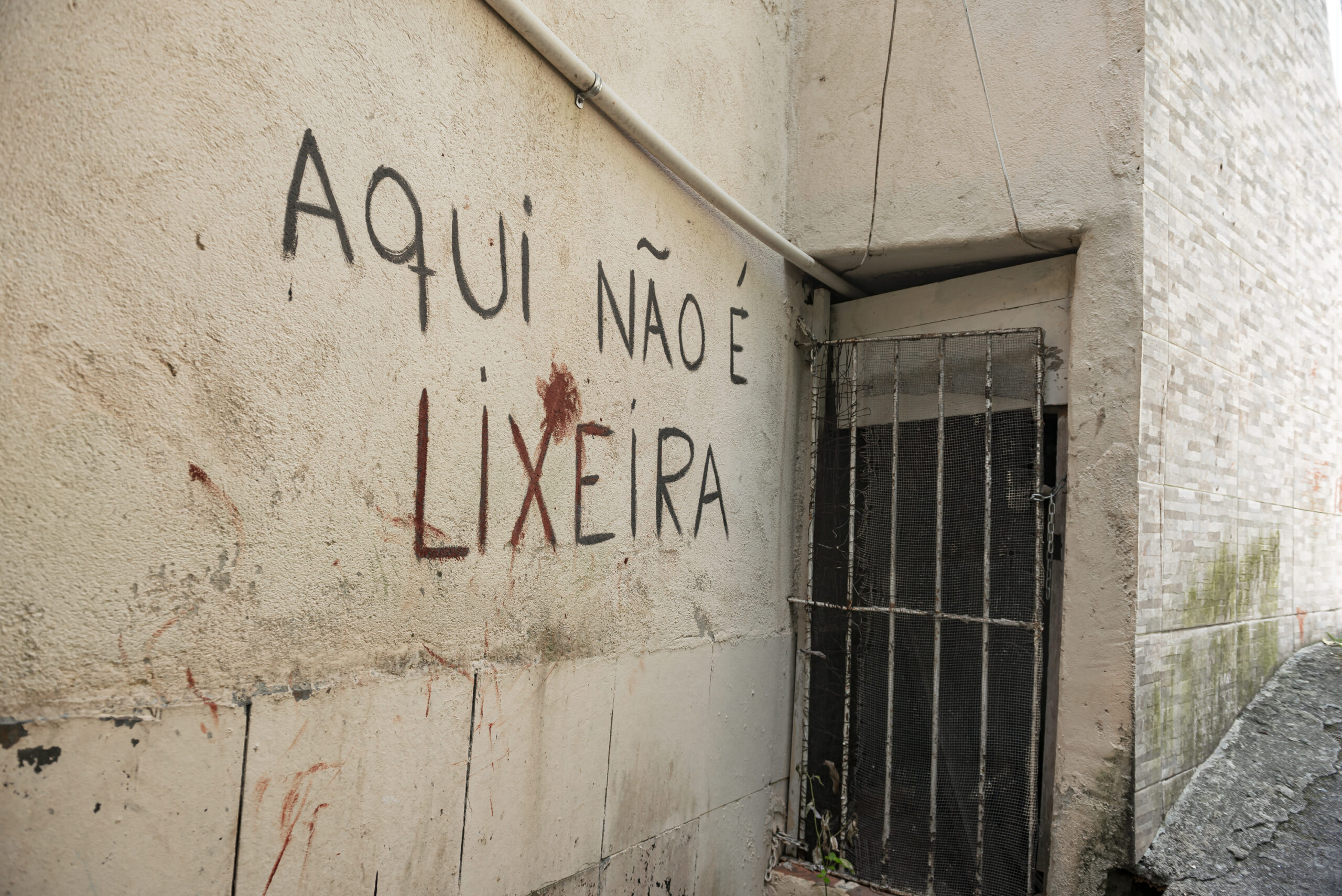
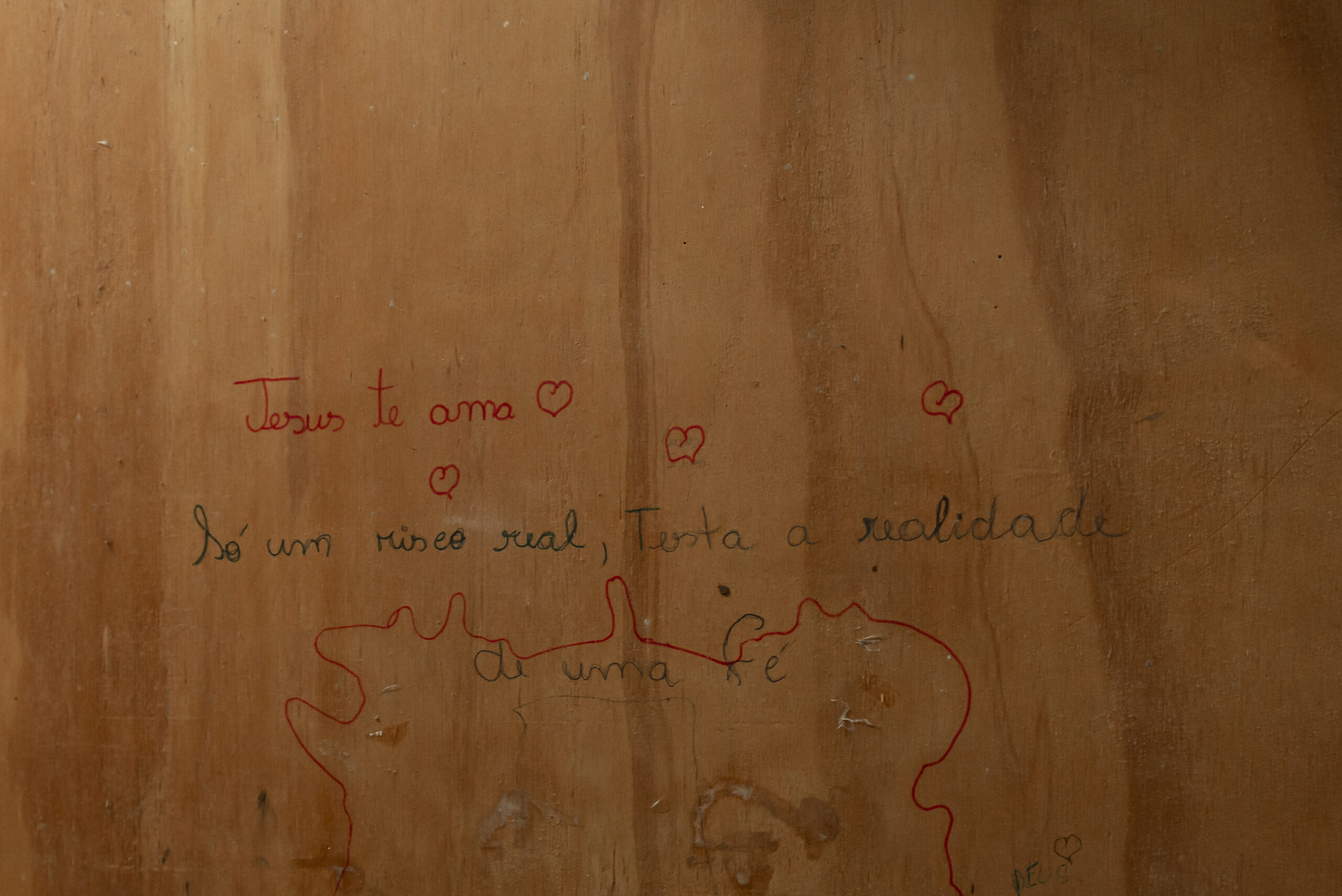
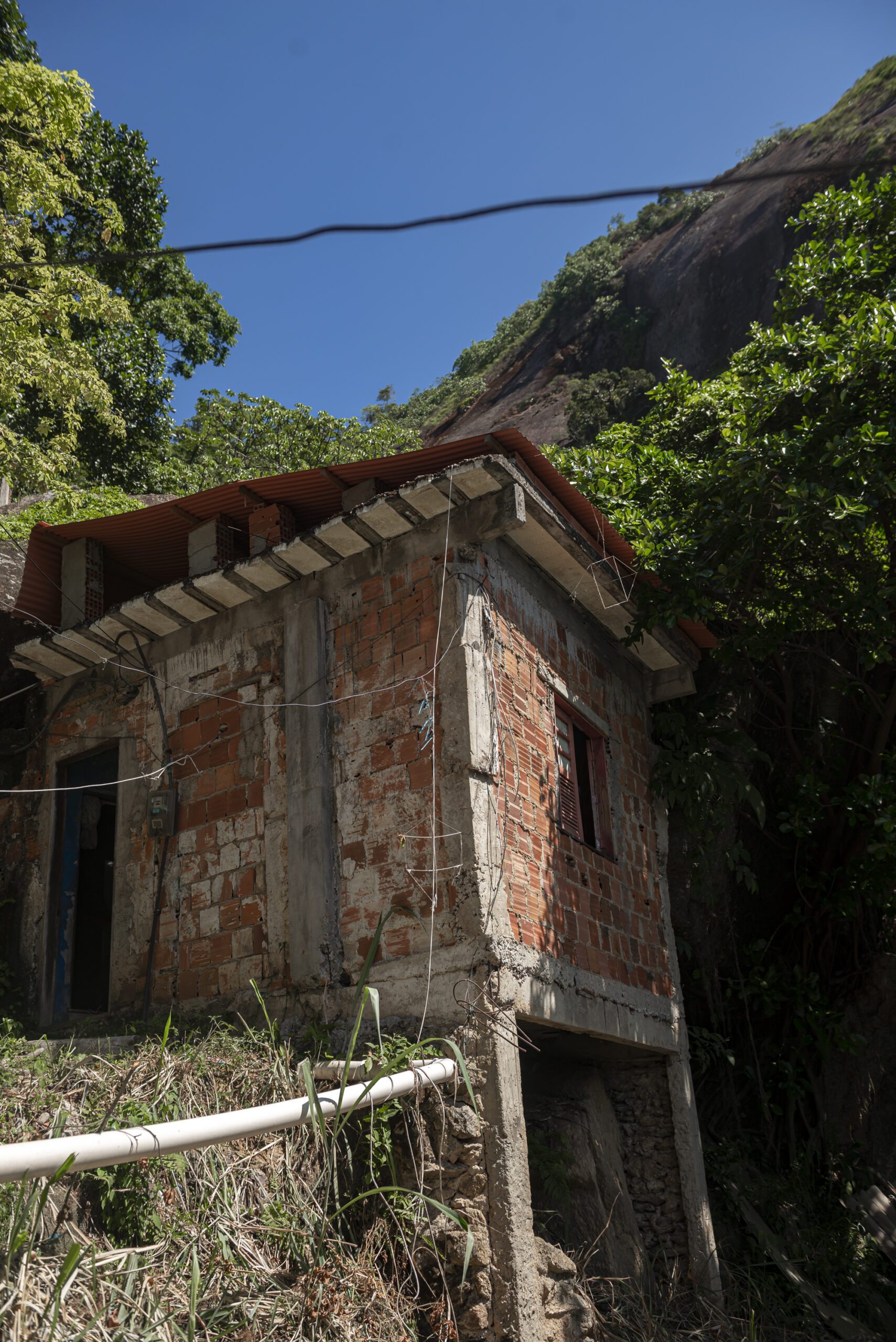
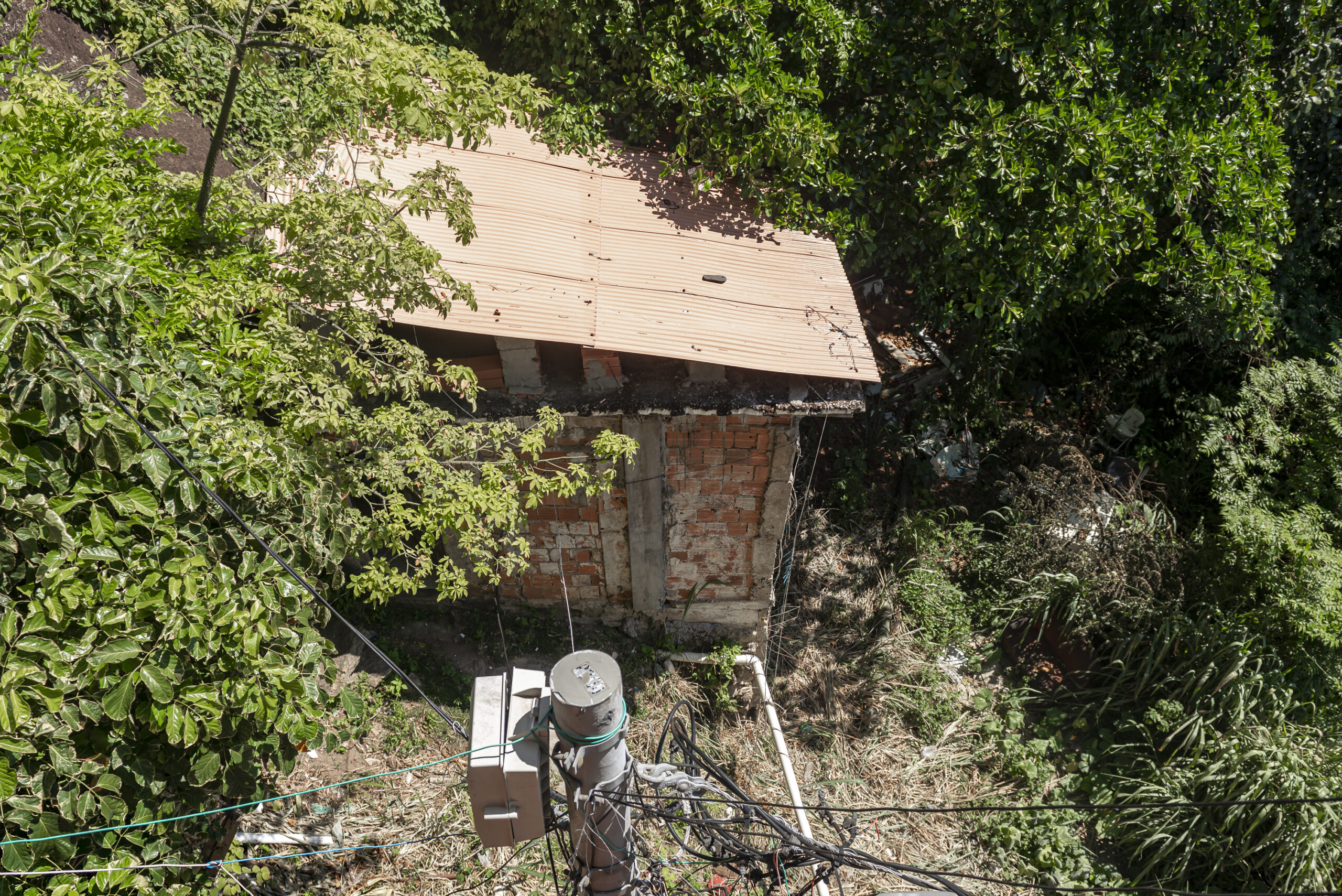
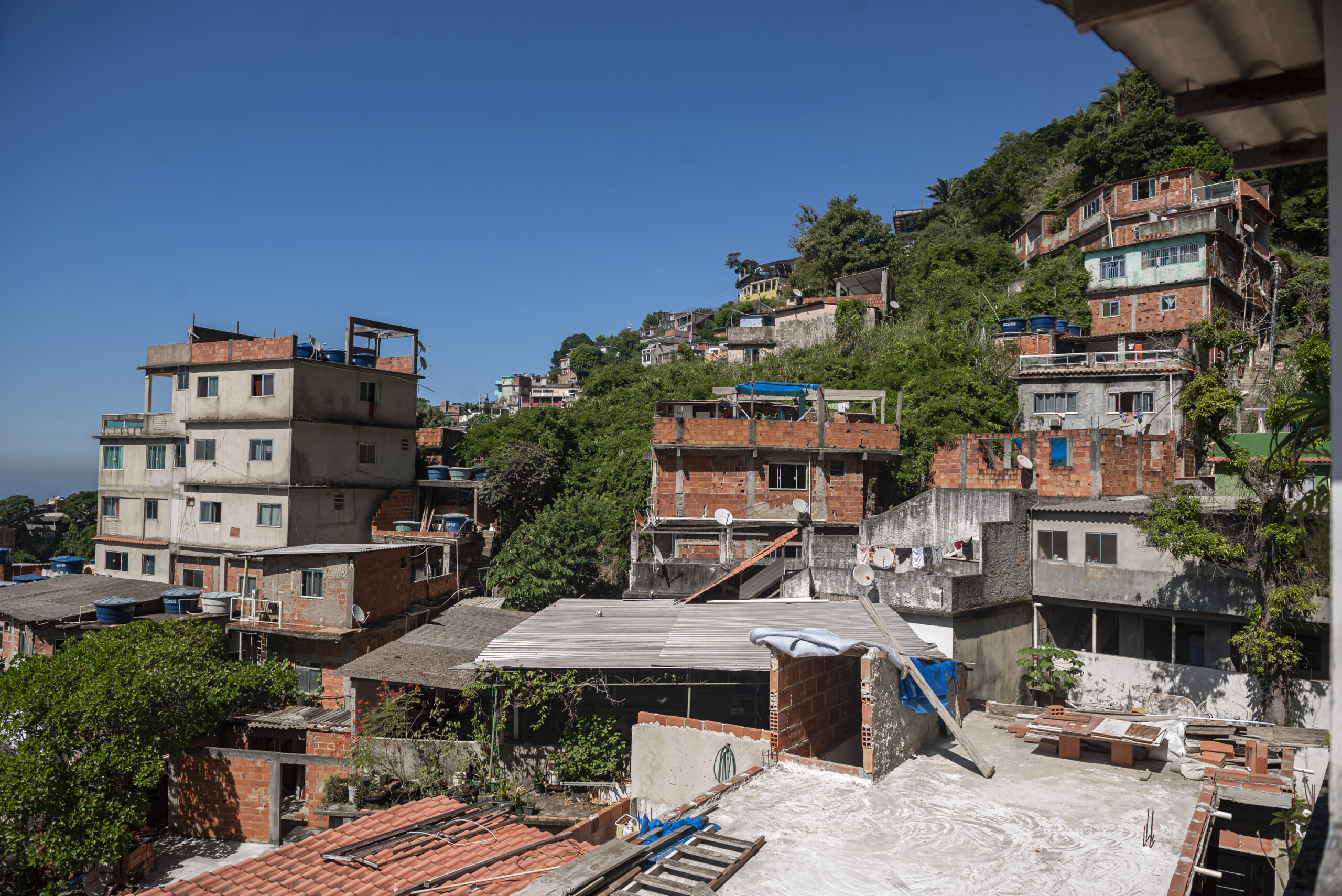

About the author: Bárbara Nascimento was born and raised in Vidigal. A Portuguese teacher in the Rio de Janeiro city and state public school systems, she holds an undergraduate degree in Modern Languages (UFRJ: 2002) and a Master’s in Social Memory (UNIRIO: 2019). She founded and directs the Vidigal Nucleus of Memories, a range of initiatives that prepares archives and keeps records that aim to support the formation of a collective memory in Vidigal.
